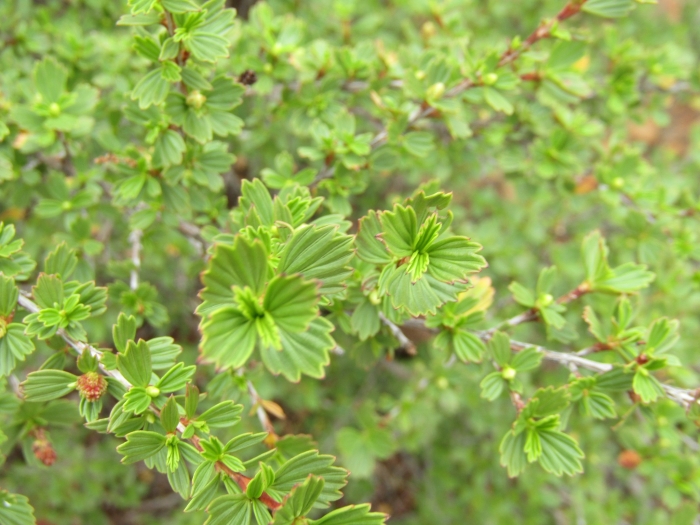Resurrection Plant
(Myrothamnus flabellifolius)
Resurrection Plant (Myrothamnus flabellifolius)
/
/

Murphy Tladi
CC BY 4.0
Image By:
Murphy Tladi
Recorded By:
Copyright:
CC BY 4.0
Copyright Notice:
Photo by: Murphy Tladi | License Type: CC BY 4.0 | License URL: http://creativecommons.org/licenses/by/4.0/ | Rights Holder: Murphy Tladi | Publisher: iNaturalist | Date Created: 2020-10-12T11:26:51-07:00 |























Estimated Native Range
Summary
Myrothamnus flabellifolius, commonly known as the resurrection plant, is a perennial herb native to rocky slopes and outcrops in the grasslands and savannas of Southern Africa. It is adapted to survive in regions with a pronounced dry season, where it can desiccate and appear dead, only to "resurrect" with the arrival of moisture. This species typically grows 8-48 inches in height and can form extensive colonies through its root systems. The plant is deciduous, losing its leaves during the dry winter and rapidly regrowing them following rainfall. It is found at altitudes between 1640-6234 feet and is notable for its ability to withstand prolonged periods of drought.
The resurrection plant is valued for its unique drought-tolerant characteristics and is used in traditional medicine to treat various ailments, including coughs, influenza, mastitis, backache, kidney disorders, hemorrhoids, and abdominal pains. The leaves are used to make tea and lotion, offering benefits for halitosis and gingivitis. In cultivation, it requires well-drained soil, minimal water once established, and full sun to part shade conditions. It is not commonly found in cultivation outside of its native range but can be grown as an interesting and educational specimen in botanical gardens or by plant enthusiasts.CC BY-SA 4.0
The resurrection plant is valued for its unique drought-tolerant characteristics and is used in traditional medicine to treat various ailments, including coughs, influenza, mastitis, backache, kidney disorders, hemorrhoids, and abdominal pains. The leaves are used to make tea and lotion, offering benefits for halitosis and gingivitis. In cultivation, it requires well-drained soil, minimal water once established, and full sun to part shade conditions. It is not commonly found in cultivation outside of its native range but can be grown as an interesting and educational specimen in botanical gardens or by plant enthusiasts.CC BY-SA 4.0
Plant Description
- Plant Type: Shrub
- Height: 3-6 feet
- Width: 3-6 feet
- Growth Rate: Slow
- Flower Color: Green
- Flowering Season: Spring
- Leaf Retention: Evergreen
Growth Requirements
- Sun: Full Sun, Part Shade
- Water: Low
- Drainage: Medium, Fast
Common Uses
Drought Tolerant, Low Maintenance, Rock Garden
Natural Habitat
Rocky slopes and outcrops in the grasslands and savannas of Southern Africa
Other Names
Common Names: Trevirana, Fountain Bush
Scientific Names: , Myrothamnus flabellifolius, Cliffortia flabellifolia, Myrothamnus flabellifolius subsp. elongatus, Myrothamnus flabellifolius subsp. robustus,
GBIF Accepted Name: